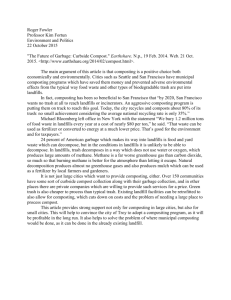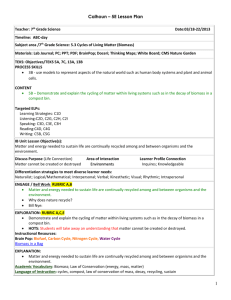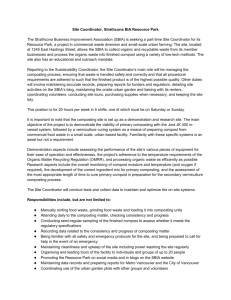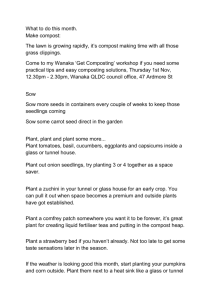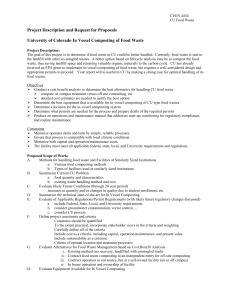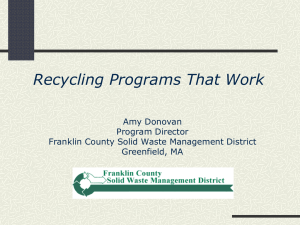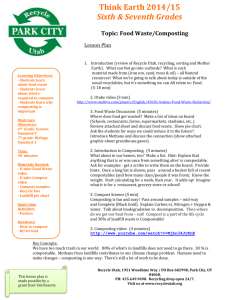Cycling of biomass using a compost bin
advertisement
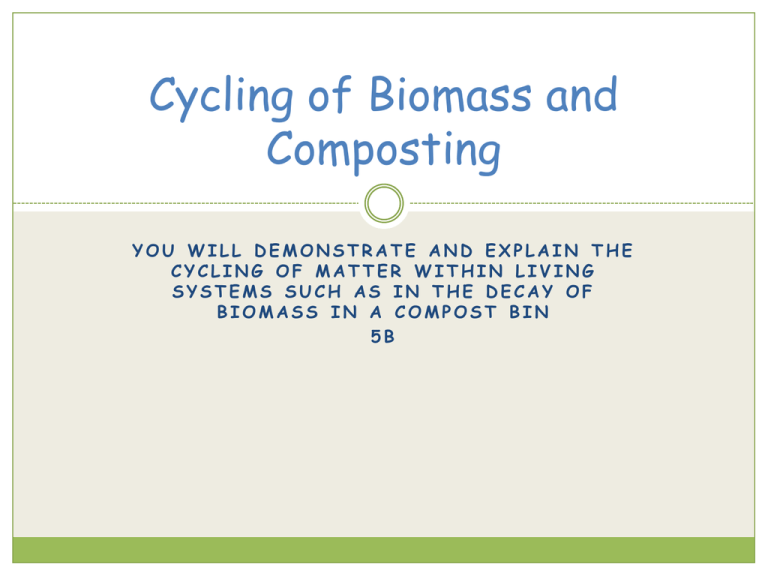
Cycling of Biomass and Composting YOU WILL DEMONSTRATE AND EXPLAIN THE CYCLING OF MATTER WITHIN LIVING SYSTEMS SUCH AS IN THE DECAY OF BIOMASS IN A COMPOST BIN 5B What is Biomass? Card Sort Activity: With your partner, sort your cards into two categories: Examples and Non-examples of Biomass What is Biomass? Biomass is organic material made from plants and animals. (Organic means it contains the element carbon and is made from plant or animal products) contains stored energy from the sun. Plants absorb the sun's radiant energy in a process called photosynthesis. Review Time Write the equation for photosynthesis in your notes. The chemical energy in plants gets passed on to animals and people that eat them. Biomass • Renewable Energy Source WHY? We can always grow more and when organisms die, they decay and release energy The Cycle Activity: Read the short article on Bioenergy with your partner. •Draw a sketch of the Bioenergy Cycle as you read. •Make sure to include our ultimate source of energy. •Try to show how recycling plays a role in process. How do we contribute to the cycle? Classic Trash Activity What do these items all have in common? Classify each item in the box. Decide what criteria you will use to classify each item. Class discussion: What are your categories? Define the categories. How long will it take for your items to decompose? What are some problems with landfills? How can these problems be avoided? Cross section of a Landfill What percent of waste put in landfills or is burned is considered biomass? Food 18% Paper Products 22% Wood 8% Yard Trimmings 7% Textiles 6% 61% Composting In 1960 the average American threw away 2.7 pounds of trash a day. Today each person throws away about 4.5 pounds a day. (That comes to about 2000 lbs or 1 ton of trash/year!) Composting can reduce our waste to landfills. Composting is a way to recycle organic solid waste. Composting Video Clip Lab: Compost Bin in a Bottle Composting Hints Meat and dairy products are high in fat and will cause an unpleasant odor if added to a poorlymanaged compost pile. Running them through a blender will speed up their decomposition. Worms can reduce composting time by 50%. Here are some experiments that you can do with your column: Weigh the column daily and graph the change in weight as the compost develops. Monitor and graph the amount of water used by the column daily. Do this by subtracting the volume of water collected at the bottom from the volume of water you've added to the top. Measure the temperature of the column with a soil thermometer daily and graph it. Take notes about the appearance of the trash in the column daily. How long does it take to decompose? Collect the drainage water and look at it under a microscope to see the microscopic organisms that live in the compost. Composting Game Informational Site: http://www.eia.doe.gov/kids/energy.cfm?page=biomass_home-basics-k.cfm http://home.howstuffworks.com/composting.htm/printable http://public.doe.k12.ga.us/DWPreview.aspx?WID=89&obj=54282&mode=1
